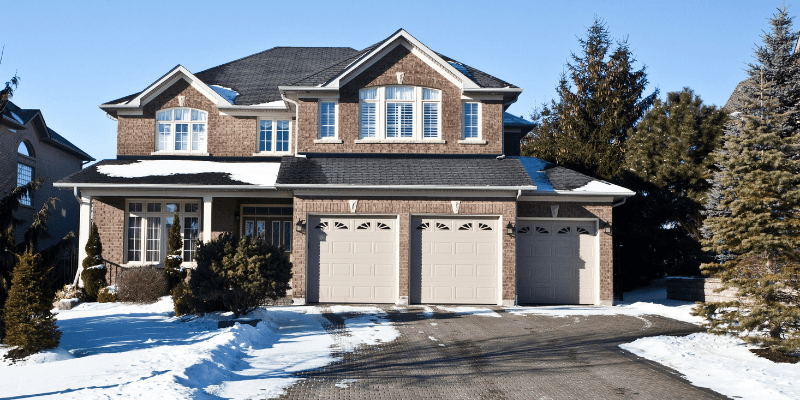More than half of the United States will experience freezing temperatures and snow this Winter season. If you’re reading this post, odds are, you are one of the thousands of people in the country deciding to move their home regardless of the weather outside. And that’s great! But it’s important to know what you are getting into when planning a Winter move.
Even during the warmest seasons and best circumstances, relocating your home can be a monumental undertaking. Add in the extra wintertime hurdles of cold temperatures plus unpredictable weather and you could have a real circus on your hands. Being well prepared for your Winter move is the only way to ensure its success.
Here are 8 moving tips to help you prepare for moving and succeed with your winter move:
Seek Help
Moving all of your furniture and belongings during the short days of winter won’t be an easy task to go at alone. Whether you enlist friends and family or you decide to hire a professional moving service, you’re going to need some help. The move size, distance, and your budget will all be factors when deciding what kind and how much help will be needed.
If you’re only moving a few items and a sofa around the corner, you might be able to convince a few friends to help with the promise of pizza. However, if you are moving a fully furnished home from one city to another, you may consider hiring a professional moving company that is equipped and familiar with winter moves.
The help option which is safest, most efficient, and fits your needs is the one to go with. Also, be sure to secure your help as far in advance of your move date as possible.
Get Organized and Stay Organized
This is great advice for any type or size of move, at any time of year. Good organization will help streamline the relocation process and keep you from getting a massive headache come move day.
“What is the best way to organize for my upcoming winter move?” you may be asking. Here are a few basic recommendations to follow:
- Sort through the items in your home. Decide which items are going, staying, being sold, donated, given away, and trashed.
- Have a plan on where everything is going in your new home. No one likes to move things twice, especially in the cold.
- Clearly label all boxes, bags, and tubs being moved. List the contents and room to be moved into.
- Set aside any items that need to be transferred to your personal vehicle. Priceless or irreplaceable items, cash, jewelry, computers, sensitive electronics, and any paperwork associated with the move or your new home.
Pack your belongings for bad weather
Whether you are moving into the city or moving to a rural area, weather can be a factor in the winter. Even the most experienced packers may not always realize that there are certain differences between packing for a summer move and packing for a winter move. The major difference between the two packing scenarios is, of course, the weather.
While both move locations are heated on the inside, you should consider the freezing temperatures your belongings will be subjected to the moment they leave your old home. To make things worse, the temperature inside non-climate-controlled moving trucks can dip extremely low and endanger the well-being of your more sensitive and fragile possessions.
Take extra care while packing:
- Fine China or any nontempered dishes
- Antique furniture or any delicate items made of wood
- Musical instruments
- Electronics
- Anything fragile that cold temperatures will negatively affect.
All of these items require a little extra care and a few extra layers of packing paper or bubble wrap to ensure they won’t be affected by the cold temperatures of winter.
Plan for delays
Unfortunately, moving in winter has some obvious drawbacks. One of these drawbacks is the unpredictable nature of weather conditions. One moment the skies could be clear and bright, and in the next, a blizzard could set in and make your move a lot more challenging if not impossible.
You will also need to keep in mind that it gets dark very early in the winter, typically around 5:00 pm depending on your location.
These factors naturally make delays a probability, so always be sure to plan for extra time.
Keep an eye on the weather
Check the weather in both move locations every week leading up to the move, and then check on it daily the week of your move. If you’re convinced bad weather conditions will shut down roads or hinder your movers, call the moving company and express your concern. It’s better to delay the move than getting caught in a snow storm.
If using a moving service, make sure to listen to their concerns about possible weather-related complications. No one can control the weather, so it’s important to be flexible with scheduled move times and dates during the winter months.
Protect your floors at both move locations
A Winter move through snow or rain can become extremely messy, very quickly. Melted snow mixed with dirt and mud will ruin your floors, so be sure that either you or your moving crew put down floor protection to prevent stains and damage.
Laying down floor protection is standard practice for most professional moving services. If your movers don’t offer floor protection for your home, insist that they must.
Keep walkways, driveways, and loading areas clean
Safety must be the #1 priority before your move as well as after your move, but especially relocations during the winter months. Under certain circumstances (like a sudden blizzard), a Winter move can be extremely dangerous and you must do everything in your power to keep your home safe and safe for everyone involved.
Clear the driveway, walkways, and sidewalks around your house from accumulated mud, snow, or formed ice. Additionally, ensure that a parking area for the moving truck is cleared and ready for work. If you don’t keep clear and safe pathways for your crew, the chances of someone slipping or tripping increase drastically.
Find a temporary home for your pets
Most pet owners would happily leave their fur babies outside for a few hours in warmer weather. Unfortunately, moves scheduled for the Winter months bring some added difficulty with pet care.
To avoid any of your animals running away from home or freezing out in the cold, we recommend boarding your pets with a friend, family member, or pet hotel for the day. This is the best way to keep them warm, cared for, and safe.
Note: If you have any houseplants you care about, you may want to find a temporary home for them as well. Most indoor plants will not survive through harsh winter temperatures for too long.




